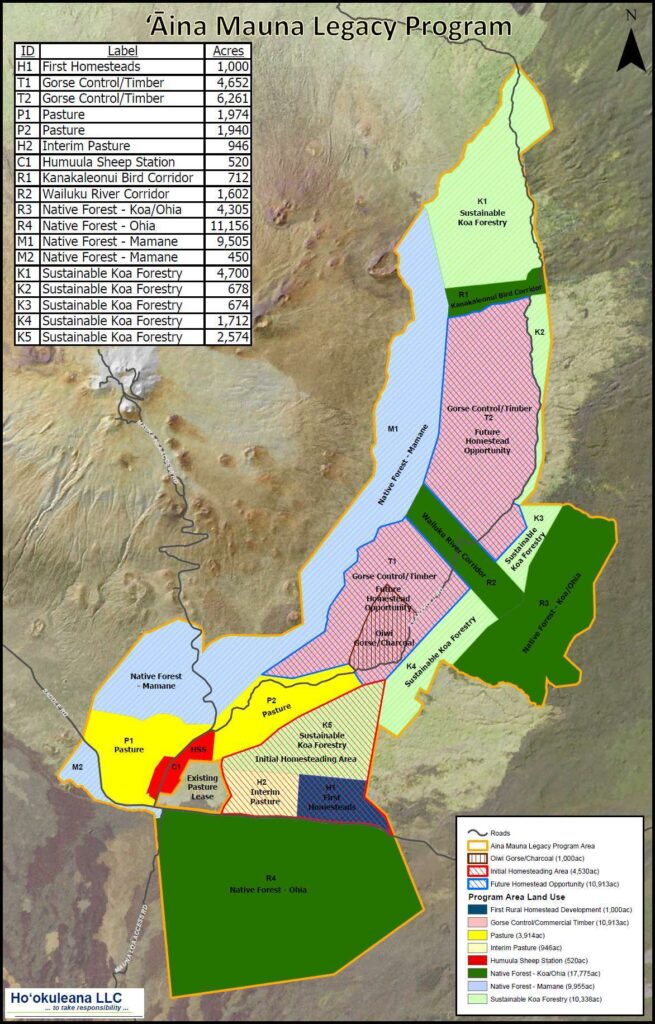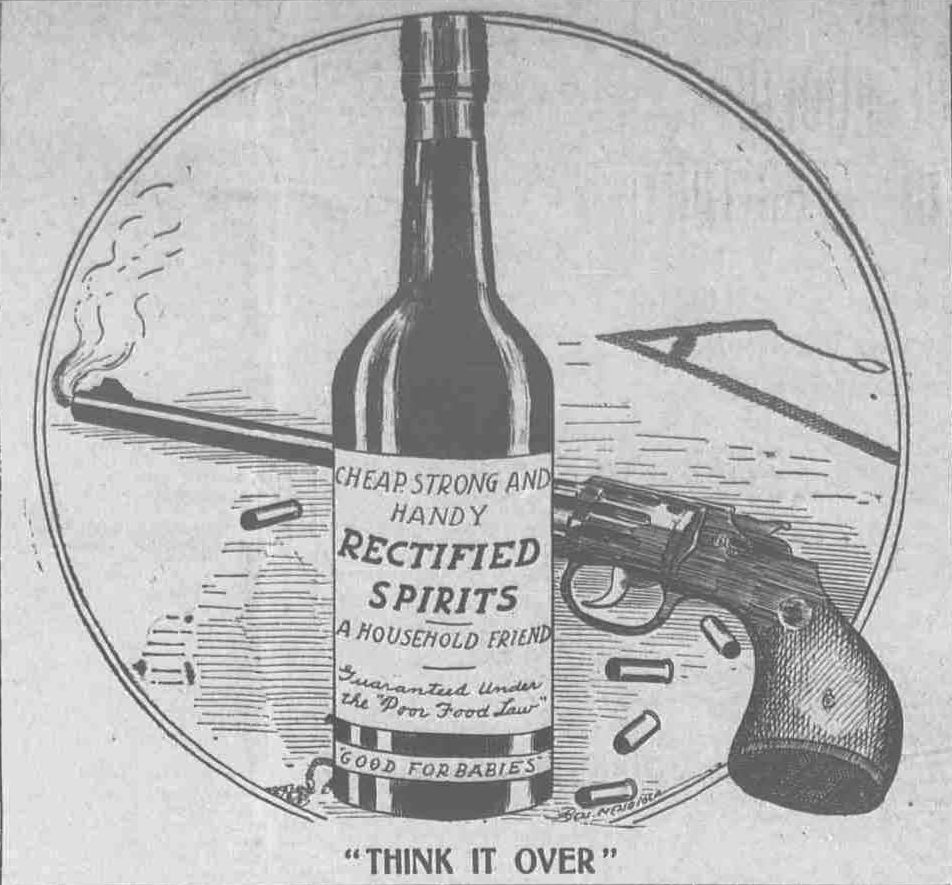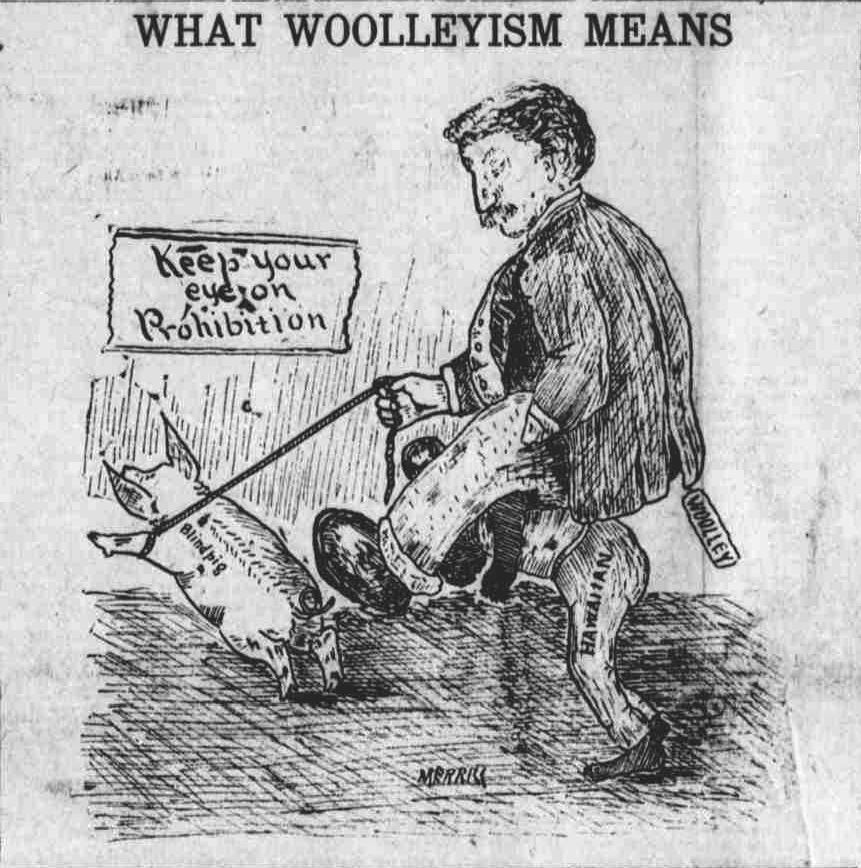“As agriculture developed, the landscape began to transform and has undergone alterations throughout its history of human settlement. Polynesian voyagers stocked their canoes with pigs, chickens, and dogs as well as crops needed for colonization.”
“The native lowland forests were cleared and replaced with taro, sweet potato, yam, banana, sugarcane, breadfruit, and coconut. The land was modified with advanced farming practices that included irrigation from streams, terracing, mulching, and use of green manure.”
“Slash and burn techniques were used to clear land for crops and to encourage the growth of pili grass used in house thatching.” (Kakahai‘a NWR, FWS)
The arrival of Europeans in the 1770s brought the introduction of goats, horses, cattle, and sheep. The Duke of Edinburgh had deer transported from Japan to Molokai as a gift to Kamehameha V in 1870.
The growing herds quickly increased and endemic plants quickly declined, leaving vast areas barren due to soil compaction that increased runoff and accelerated erosion. (Kakahai‘a NWR, FWS)
“As foreign vessels began to visit the Islands the number of imported cultivated plants and domesticated animals increased rapidly. … Provisioning of ships gave the first foreign stimulus to Hawaiian agriculture.”
“Ships stopping at the Islands during the four decades following discovery were mainly engaged in fur and sandalwood trade
between the Pacific Northwest, China, and Hawaii. … “
“Provisioning of ships gave the first foreign stimulus to Hawaiian agriculture. Ships stopping at the Islands during the four decades following discovery were mainly engaged in fur and sandalwood trade between the Pacific Northwest, China, and Hawaii.” (Philipp)
Sugar cultivation on Molokai began commercially with the founding of the Kamalō Sugar Plantation in 1873. John C. McColgan established the plantation, leasing land from the estate of King Kamehameha V. Shortly thereafter came Moanui Sugar Mill and Plantation (established in 1875) and Kalae Sugar Plantation (established in 1876).
The Hawaiian Gazette ran a story in 1873, “New Sugar Plantation. The steamer, on her last trip to windward, landed at Molokai seventy head of bullock, belonging to Mr. J. McColgan, who proposes to start a sugar plantation on land which he has lately leased from the administrators of the late King’s estate.”
“The tract, which Is located between Kaunakakai and Kaluaaha, comprises about four thousand acres [Kamalo Sugar Company controlled the coast from Kamalō to Mapulehu (USGS)] …
“… stretching from the sea to the mountains, and is known as Kamaloo. Of this about one hundred and fitly acres are low land, and believed to be adapted to cane growing.”
“The cane will be cultivated by a farmer who has already gone to work. The mill is the same as that used on Mr McColgan’s Ewa plantation, and will be set up in time to take off the crop, which will be ground on shares. This system divides the risk and the
profit between the planter and manufacturer.” (Hawaiian Gazette, July 23, 1873)
John C McColgan (also known in the Islands as John Kamanoulu and sometimes referred to as John H McColgan) was born in Ireland on December 24, 1814. In 1849, McColgan moved to California to work in the gold mines and, on November 26, 1849, he sailed from San Francisco, California, aboard the American ship Elizabeth Ellen. He arrived in Honolulu on December 13, 1849.
Shortly after his arrival in the Hawaiian Islands, McColgan started work as a tailor. He is credited with bringing the first sewing machines to Hawai‘i on September 12, 1853, and his skill and expertise led to his becoming the personal tailor for King Kamehameha III & IV. (Lynn Kananiu Daue)
“He set up a household, part Hawaiian, part haole style. His wife was a handsome large Hawaiian woman named Kala‘iolele … [they] had 16 children in all. … The fourteenth of these hapa-haole (half white) children was Jennie, whom in Hawaiians called Kini. She grew up to be a famous hula dancer and to marry John H Wilson, mayor of Honolulu.” (Clarice Taylor)
As an infant, Ana Kini Kapahukulaokamāmalu Ku‘ululani McColgan Huhu (aka Kini Kapahu – Jennie Wilson) was adopted by Kapahukulaokamāmalu, who was an expert chanter, hula performer, and friend of Queen Kapi‘olani. She and her adoptive mother lived on a property adjacent to the royal palace. (Imada)
By 1873, John McColgan owned a sugar cane plantation in ʻEwa on Oʻahu. Later that year, in July, he leased land from the late King Kamehameha V’s estate on Molokai to start a sugar cane plantation which would use the same milling technology employed at the ʻEwa plantation.
In about 1877, John moved to Kamalō on Molokai. His sugar cane plantation, the Kamalo Plantation, did well, producing “rattoons, six months old, from the same place, which measured eight feet in length and nine inches in circumference … “ and “stalks of cane … eleven months old, and measured 10 to 12 feet in length.” (Lynn Kananiu Daue)
In 1878 Kamalo Plantation harvested its first crop. Located on the southern slopes of the island, 44 laborers cultivated about 100 acres of cane. Its mill struggled to produce 250 tons of sugar in any one year. (Dorrance)
By 1880, John’s cousin Daniel McCorriston (1840-1927) managed the Kamalo Plantation, and his cousin Hugh McCorriston (1836-1926) refined the sugar while John acted as the agent in Honolulu. (Lynn Kananiu Daue)
In the 1880s, nearby sugar planters would load sugarcane onto a small flatbed barge and tow the cargo by draft animals along the shallow shoreline to the mill at Kamalo. (Kakahai‘a NWR, FWS)
By 1884, the Kamalo Plantation was doing well enough to engage in the exportation of refined sugar to the United States, helping lay the foundation for the sugar partnership between California and Hawaii that exists today as C&H Sugar. (Lynn Kananiu Daue)
In 1891 the plantation harvested its last crop. (Dorrance) Kamalo Sugar Plantation, under manager Patrick McLane and Agent, Frank Hustace, started in 1899; it was short-lived and closed in 1900 – signaling the end of sugarcane plantations on Molokai. (Dorrance)





































